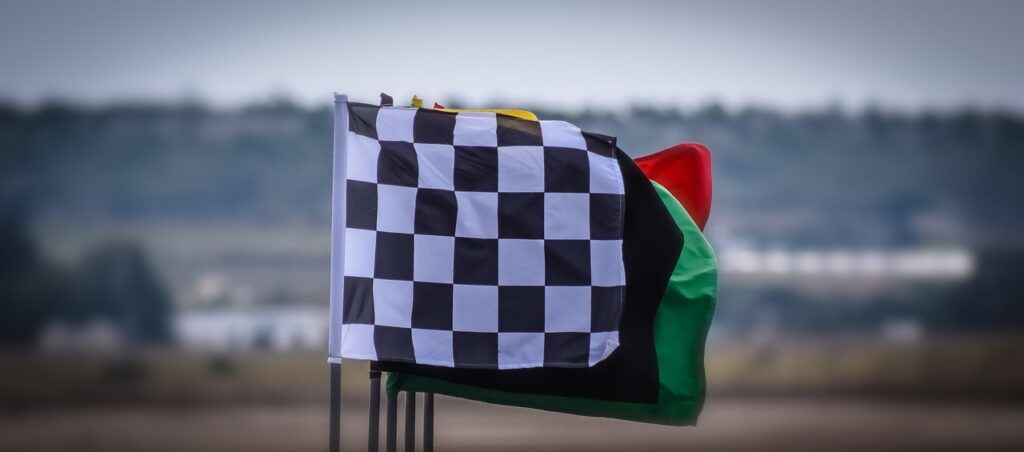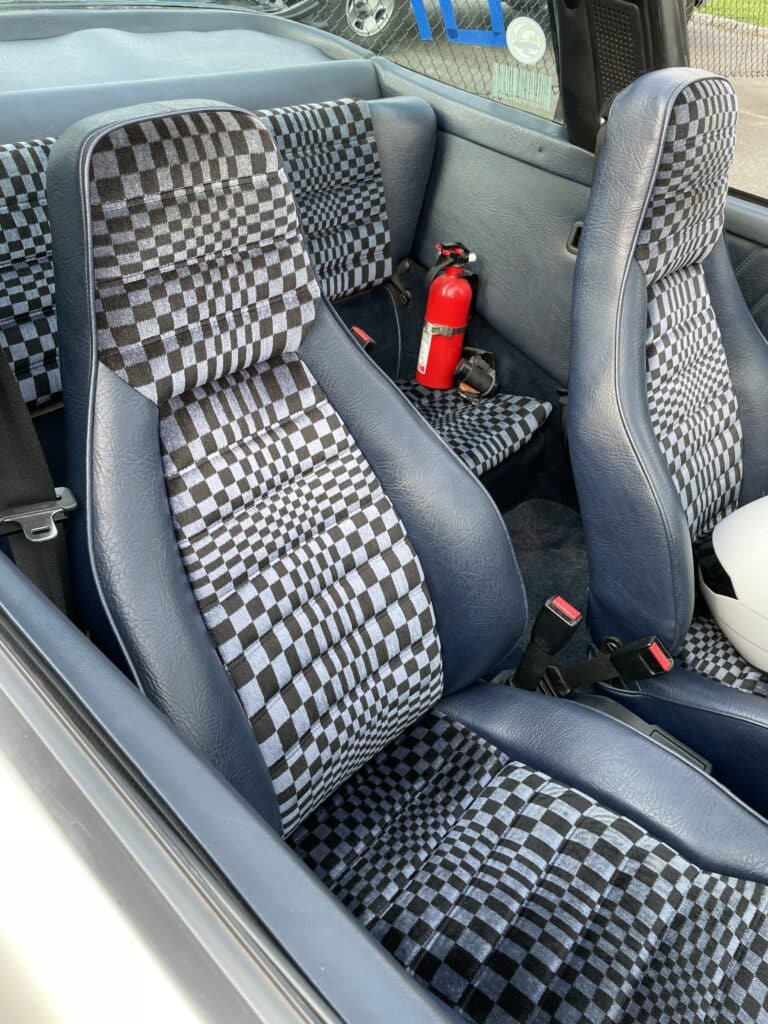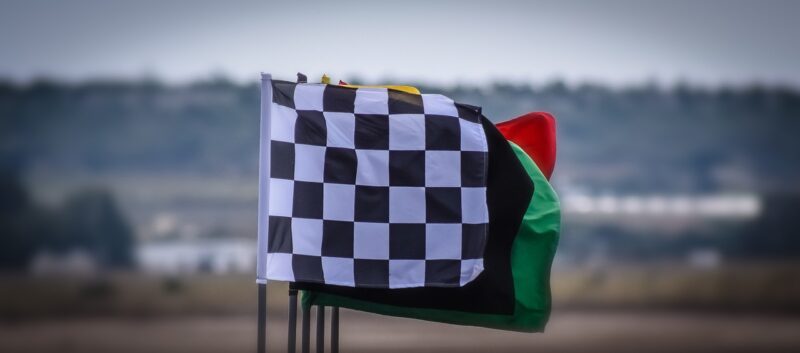
Most people recognize the black and white checkered flag, which signals the end of a race. But how did this iconic flag end up symbolizing the racing lifestyle? And what does it have to do with Porsche design? The root of the flag is a bit of a mystery, but there are several theories to how it wound up becoming one of racing’s most enduring symbols. And its inclusion in a certain period of Porsche models is also an interesting story.
The checkered flag may harken back to the settlement of the American Midwest in the 18th century. Following horse races, participants would join together for a large public meal. When the food was ready, someone would wave a checkered tablecloth to let the participants know that it was time for supper, according to Carolus Chess.
Another theory involves the dawn of automobile racing. The dirt tracks generated a lot of dust from the vehicles, and a checkerboard-patterned flag was easier for the participants to see at the finish line compared to a one-color option.
In his book “The Origin of the Checker Flag – A Search for Racing’s Holy Grail”, author Fred Egloff points to a specific person for creating the checkered flag—a man named Sidney Waldon from the Packard Motor Car Company. The American Automobile Association (AAA) sponsored the Glidden Tours at the turn of the century to promote the acceptance of motor vehicles. This road rally was several hundred miles long, and participants were timed between stations. Waldon reportedly used the checked flag to indicate “checking stations” or check points.
A 1906 photograph (below) shows the earliest-known image of a checkered flag. The photo is from the end of the Vanderbilt Races in New York, and Waldon was part of the race committee. He reportedly introduced the use of the checkered flag at the finish line, and it is postulated that the man holding the flag was Fred Wagner, who performed the duty for subsequent races.

So, how does the checkered flag relate to Porsche? From 1978 through 1984, the automaker created a velour fabric for 911, 924 and 928 models known as Pasha. It was known internally as schachbrett or checkerboard, and it was used on the seats and door panels. According to the Porsche media website article “The Most Famous Porsche Seat Designs”, the number-one slot goes to the Porsche 911 Targa SC and its Pasha interior. The article explains, “This is reminiscent of the chequered finishing flag in motorsport races, further enthralling our onlookers.” The fabric was available in both black and white and navy blue with black contrast (the latter of which is used in this writer’s 1981 911 Targa SC below).

But there’s more to the story. The Pasha pattern has an Op Art (optical art) influence, according to MotorPunk. This design style is a “form of abstract art that gives the illusion of movement by the precise use of pattern and color, or in which conflicting patterns emerge and overlap.” Google the 1961 artwork Movement in Squares by Bridget Riley, and you’ll understand the visual.
Porsche Chief Designer Antole “Tony” Lapin, who was involved in the company’s first water-cooled models, was known for his fashion sense, and he reportedly wore a check-patterned Op Art scarf to the office one day in the early 1970s. The sensation and attention that the scarf generated may have led to the creation of the Pasha interior that is so beloved today. Did Porsche prefer correlating the checkerboard pattern to the race flag rather than a psychedelic art movement? Perhaps. Or maybe it truly is a juxtaposition of them both.
Either way, the checkered flag has had its influence on the Porsche community. There is a dealership in Virginia called Checkered Flag Porsche. And you too can add some flair to your modern 911, 997, 991, 992, GT3, RS, Turbo, Carrera or 4S with these checkerboard door panel decals from Amazon. Not only will they add some “cool racing style” to your car, but they can also protect the paint from wear and tear and hide imperfections.
